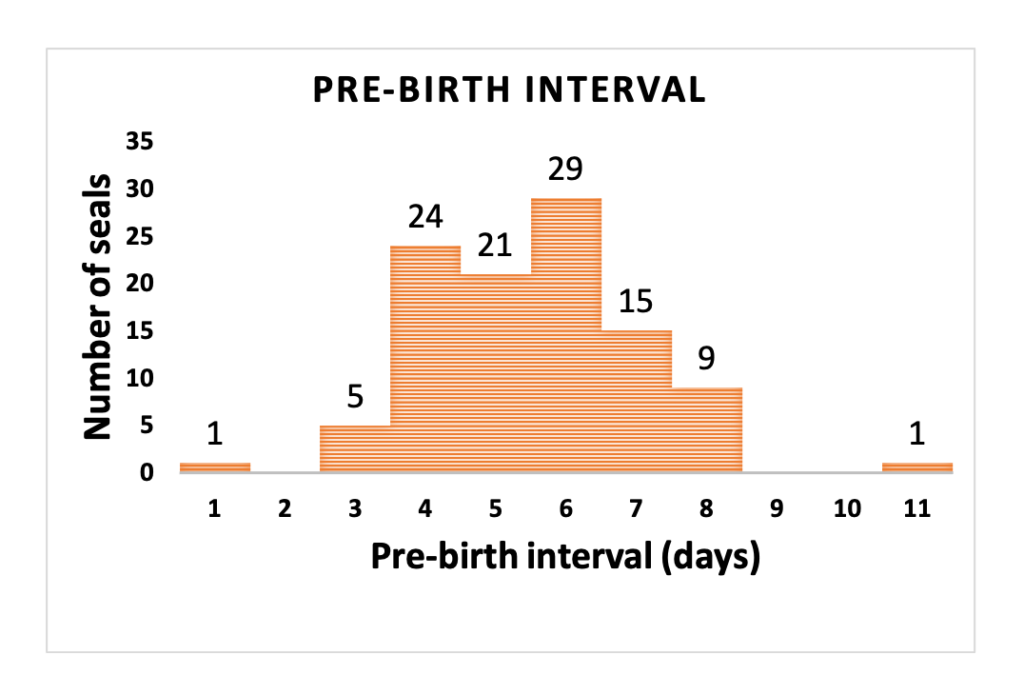A NARROW WINDOW
by Tim Postiff
The timing of reproduction in plants and animals is optimized for success and must be balanced against growth of the organism. For northern elephant seals, birth must be separate from migration – birthing at sea is fatal for pups. However, if the prospective mom arrives ashore too early, she gives up foraging time and burns resources that would otherwise make her pup better able to face the world.

To gain a better understanding of how elephant seals adjust the timing of their migration to keep their pre-birth time ashore short, and yet long enough to ensure against birth at sea, researchers at Año Nuevo gathered data from seals that had been tracked at sea, and whose arrival date and date of giving birth had been observed.*
From the years 2002 to 2015, there were 106 seals that met these criteria. Of these 106 seals, 104 arrived from 3 to 8 days before giving birth. One of the earliest seals arrived 11 days before giving birth and proved to not be a good mother. The last seal to arrive gave birth the next day. The mean time ashore before giving birth was 5.5 days.
The geo-positioning data gave insights to the prospective mom’s behavior in the two weeks before arriving. The average distance from the colony 15 days before birthing was 423 miles. However, the seals farthest from the colony were approaching at about 50 miles per day, while those closest were approaching at less than 10 miles per day. The seals seemed to know where they were in relation to the colony as well as in relation to their due date.
Adult females get one chance a year to pass on their genes. Losing a pup due to late arrival subtracts a reproductive year. Delayed implantation** widens the window for when a female may become pregnant and still stay on a yearly schedule, but the penalty for getting off schedule is the loss of a year of reproductive potential. Almost all elephant seals operate within the arrival window of 3 to 8 days before giving birth. Unlike herd animals, elephant seals migrate thousands of miles independently of other elephant seals. The mother does not have the collective behavior of a herd to guide her, yet she accurately times her arrival onshore. Besides ensuring that the pup is born on shore, are there other reasons to arrive 3 to 8 days before giving birth? Is it physiologically important to be ashore a while before birthing? Some researchers are looking at the social behavior of elephant seals. Is it important for the female to have time to establish herself in a social order? Just as the conclusions of this article lay in data that was collected over 13 years, some of these answers may be hidden in data that is already on file, or may only be uncovered by new research.
Reference
*Condit, Richard; Beltran, Roxanne; Robinson, Patrick; Crocker, Daniel & Costa, Daniel. (2020). Birth timing after the long feeding migration in elephant seals. Marine Mammal Science. 17 December 2021. https://doi.org/10.1111/mms.12896
**Elephant seals typically mate near the end of nursing. The fertilized egg pauses its development until the end of the female molt. The egg then implants in the uterus and active gestation begins. An estrous female could mate any time in the fall or after nursing, but the due date is set by the end of molting.


